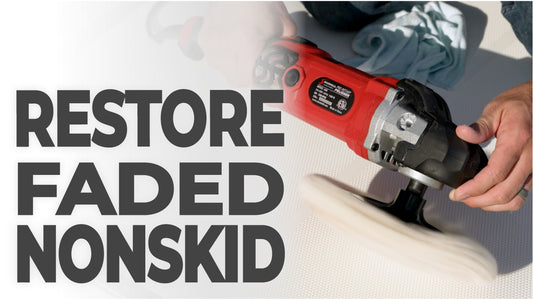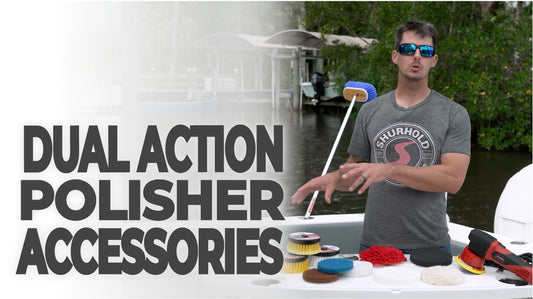
Annual Maintenance Routine and Antifouling Bottom Job
Shortsighted boat owners who lengthen the time between haul outs cost money in the long run. Conventional wisdom says it pays to haul out annually for hull painting and maintenance, but some folks stretch that period to 18 months or even two years. The pros know better and keep their bottoms as clean as their topsides.
Once a Year
“I recommend hauling out every year to catch the bottom before the growth starts to build,” said Joe Zammataro, service manager at V&G Yachtworks in Dania Beach. “Because once the growth starts to build, that’s when you get water penetration and lose performance and fuel efficiency.”
Overall, the haulout service for a 50-foot vessel focuses on three main categories: running gear, through-hull fittings, and bottom paint. Each category is important, and within each are sub-categories that may or may not pertain to a vessel, depending on the hull material, age and known performance, and mechanical problems.
Running Gear
“Some boaters pay very little attention to their running gear,” said Michael Carey of Florida Marine in Riviera Beach. “If it’s not aligned and working properly they are just throwing money away in regard to efficiency and wear and tear.”
Most captains have picked up clues during the boat’s operation that there could be a running gear malfunction, indicated by prop vibration or poor engine performance. Once the boat is hauled out and blocked, the service team works on the running gear problems first, because parts may need to be ordered.
“The props can be sent outside the yard for dynamic balancing, and back in time for re-launching,” said Michael Bach, service and sales manager for Rybovich Spencer in West Palm Beach. “The performance records on board and other fixed datum give the propeller shops the required information to tune the props. The boat’s records also help determine whether more work needs to be done, such as drawing the shafts out of the boat. You will only do that when needed.”
Running gear and outdrives will be cleaned of fouling, and can be painted with special paint systems. Zinc anodes are usually replaced even though some of the old anodes is still there. Strut bearings will be inspected to check for excess clearance, and strut bolts will be checked for tightness, corrosion, or leakage. Engine mounts are checked if vibration has occurred.
“A good tip is to do a thorough sea trial prior to hauling the vessel,” said Paul Engle, president and general manager of Bradford Marine in Fort Lauderdale. “That way problems can be pinpointed a lot faster.”
Through-Hull Fittings
A physical inspection of all the through-hull fittings is done. Metal through-hulls last longer and are more damage resistant, but they will also corrode, and the evidence of corrosion is a green or white residue. Plastic through-hulls are non-corrosive but will degrade after long-term exposure to ultra-violet light.
Inlets for the engines and generators, and drains for the bilge and other outlets, are fitted with seacocks. Seacocks allow the through-hull to be closed off, and the position of a lever-type handle tells you instantly if it is open or closed.
The service team will inspect the through-hulls and seacocks, remove marine growth and inspect for corrosion and degradation. Prevention is key to ensuring seacocks work properly, and its recommended that the seacock handle should be moved through its fully closed and fully opened path once a month.
Bottom Painting
The last step in the process is prepping the hull and applying the bottom paint. The purpose of the bottom painting is to prevent the growth of barnacles and other evidence of fouling on the bottom of the boat. Almost all recreational boaters use an ablative paint that wears off over time. Conventional, or hard paint is used in high-performance applications, where keeping drag to a minimum is crucial.
For well-maintained boats, the bottom-painting procedure is similar for fiberglass-, aluminum- and steel-hulled boats. The bottom is mechanically sanded and profile work is done, and then the ablative paint is applied. However, a fiberglass boat that hasn’t been hauled in a few years would probably have blister problems. Steel boats that have been in the water a long time would likely be suffering from corrosion, as would aluminum boats. Boats with these problems need more preparation work, and costs increase with the additional time and labor.
Some boaters scrub their own hull bottom monthly or quarterly, or hire someone to do it. This can extend the time between haulouts for bottom paintwork, but obviously does not address running gear or through-hull maintenance. Also be aware that when you clean the bottom, you also clean off the paint that protects the bottom.
The proper sanding and removal of old paint and the prep of the bottom is crucial to getting a long-lasting paint job. Ablative paint polymers wash away slowly over time with water movement, and the fouling organisms are scrubbed away with it.
Paint is normally applied by a roller, although some yards apply paint with a sprayer. A sprayer is often used on larger boats. One coat of paint is normally sufficient for boats that will be hauled annually. “Unless the customer is going to be gone on a long trip for two or three years, we feel that one coat will last a year,” Engle said. “Otherwise it gets expensive for the customer.
Service Timeline
On a 50-foot fiberglass sportfishing boat with a good maintenance record, a haulout, service and re-launch can be completed in four to five days. The caveat to that time frame concerns what the service team finds once the boat is out of the water. In general, though, here’s how a haulout usually proceeds:
1) Haul boat out, pressure wash immediately before the hull dries
2) Block the boat and stage for out-of-water work
3) Inspect and confirm the work list and original estimate
4) Negotiate and finalize add-on work found during out-of-water inspection
5) Begin work on clearances, running gear, propellers
6) Inspect and repair through-hull fittings
7) Remove and replace zinc anodes
8) Prep the hull and apply bottom paint
9) After paint is properly cured, re-launch boat
Cost
Research the fees associated with hauling out. Call around your local area to shop rates and pick an operation that has a proven track record. Other fees that may be added on include insurance on the job and an EPA charge to dispose of hazardous waste. EPA charges run about 2.5 percent of the bottom job quote.



